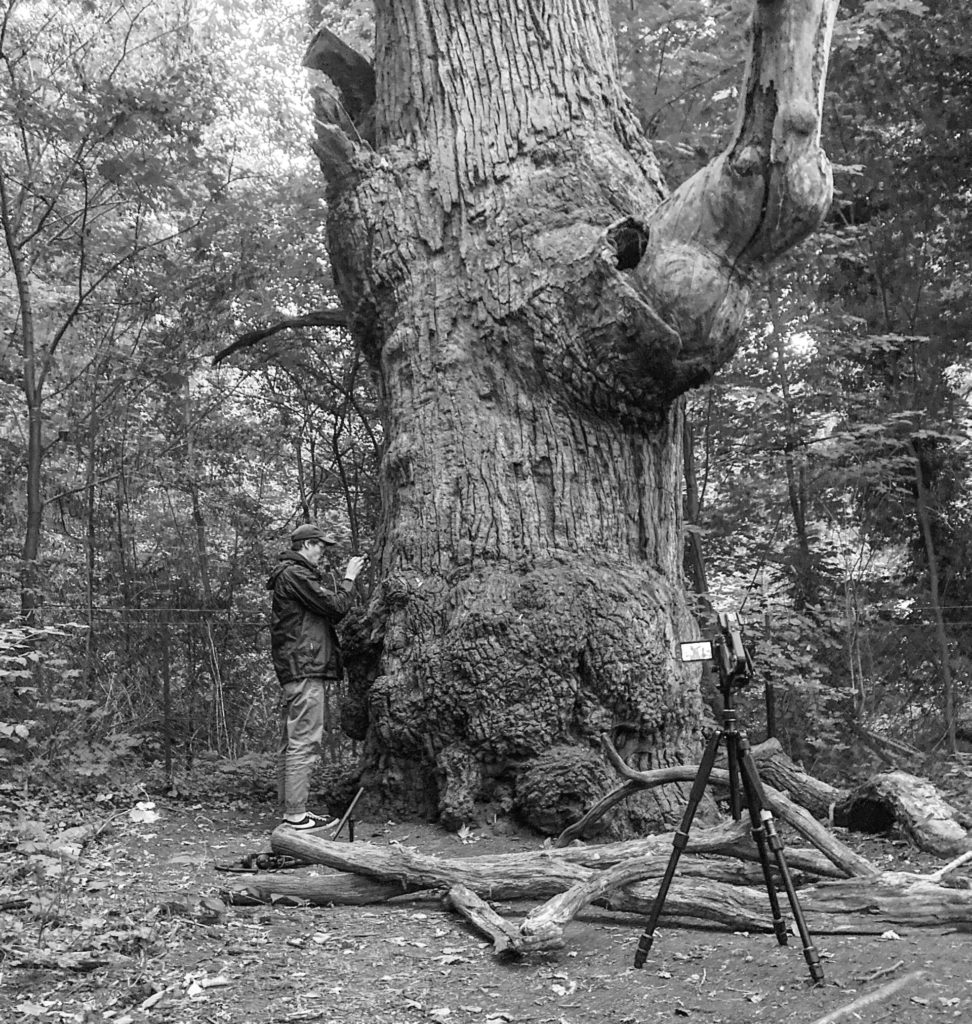Menu

Thinking about the question ‘What had we lost to find’ evoked a lot of negative thoughts about humanity. We are disconnected from nature, we stopped seeing ourselves as part of it, rather: we try to dominate it.
How can we re-connect, find new ways to communicate with nature? Can we use technology to reunite with her instead of exploiting it?
I was born in Berlin and have seen the transformation the city has gone through throughout the years. The rise and fall of buildings, people moving in and out of the city— it is a constant movement. Places that shaped my life have disappeared.
In contrast to this, there’s a tree, surviving and living through all these changes for more than 800 years:
‘Dicke Marie’, one of the oldest trees in Berlin was hanging around with Johann Wolfgang von Goethe and Alexander and Wilhelm von Humboldt: She’s a witness of the ever-changing contemporary, storing her memories inside of her.
I decided to visit her for a conversation.
It was dark. The wind was strong and acorns were falling. The noise, when they hit the ground sounded like footsteps of animals running around. I felt uneasy.
I was equipped with technical gear to record her thoughts.
When I turned on the flashlight the shape of her unraveled. I was impressed by her massiveness. Like a monument. I focused the light to the treetop and realized the actual size of her in comparison to the trees next to her. When I moved the light slowly to the trunk, hornets tried to attack me, protecting her from my invasion.
Are we not ready to have this conversation? Am I not showing enough respect, behaving exactly the way that I am criticizing? It was almost as if she didn’t let me interfere with her.
The next day I decided to visit her again. It was dawn and I could see her shape and surrounding without artificial light. The wind was quiet and light. I was slowly getting closer. When I reached the trunk I started touching the bark. It looked like the skin of a dinosaur.
To record the inner activity of her during the night, I installed an EEG-device. These devices are commonly used to capture human brain activity. Sound recorders and cameras were installed to capture her environment that she communicates with as well.
Extreme close-ups function as a way to be introduced to „Dicke Marie“, before we move into her inner thoughts. Fragments of her memories – dreams. These are captured by the EEG-device and processed to become visible and audible.
I was born in Berlin and have seen the transformation the city has gone through throughout the years. The rise and fall of buildings, people moving in and out of the city— it is a constant movement. Places that shaped my life have disappeared.
In contrast to this, there’s a tree, surviving and living through all these changes for more than 800 years:
‘Dicke Marie’, one of the oldest trees in Berlin was hanging around with Johann Wolfgang von Goethe and Alexander and Wilhelm von Humboldt: She’s a witness of the ever-changing contemporary, storing her memories inside of her.
I decided to visit her for a conversation.
It was dark. The wind was strong and acorns were falling. The noise, when they hit the ground sounded like footsteps of animals running around. I felt uneasy.
I was equipped with technical gear to record her thoughts.
When I turned on the flashlight the shape of her unraveled. I was impressed by her massiveness. Like a monument. I focused the light to the treetop and realized the actual size of her in comparison to the trees next to her. When I moved the light slowly to the trunk, hornets tried to attack me, protecting her from my invasion.
Are we not ready to have this conversation? Am I not showing enough respect, behaving exactly the way that I am criticizing? It was almost as if she didn’t let me interfere with her.
The next day I decided to visit her again. It was dawn and I could see her shape and surrounding without artificial light. The wind was quiet and light. I was slowly getting closer. When I reached the trunk I started touching the bark. It looked like the skin of a dinosaur.
To record the inner activity of her during the night, I installed an EEG-device. These devices are commonly used to capture human brain activity. Sound recorders and cameras were installed to capture her environment that she communicates with as well.
Extreme close-ups function as a way to be introduced to „Dicke Marie“, before we move into her inner thoughts. Fragments of her memories – dreams. These are captured by the EEG-device and processed to become visible and audible.